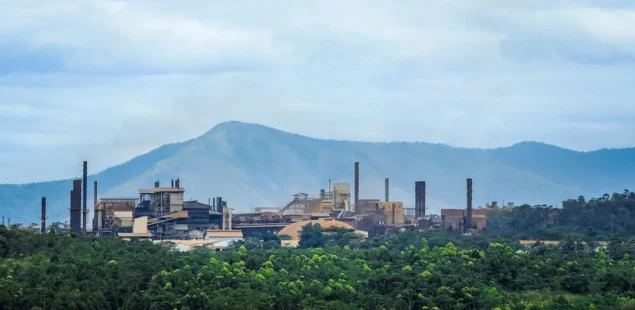
Despite macroeconomic uncertainties, including the geopolitical challenges posed by Donald Trump’s return to the White House, the outlook for the copper market remains positive, according to a report by Bank of America (BofA). The analysis highlights falling copper inventories in China, growing demand from the country, and ongoing supply constraints as key factors supporting strong fundamentals for the red metal.
BofA projects an average copper price of $4.28 per pound in 2025, a 12% reduction from earlier forecasts but still surpassing the 2021 record of $4.22 per pound. The bank predicts prices will continue to rise, reaching $4.88 in 2026, $5.44 in 2027, and slightly declining to $5.17 in 2028. This upward trajectory reflects resilient market fundamentals despite adjusted forecasts.
Copper demand is expected to grow by 3% year-on-year in 2025, up from the 2% growth seen in 2024. This increase is driven by diversification in Chinese demand, with advanced manufacturing, new technologies, and household appliances compensating for weaknesses in the construction sector. The Chinese electricity grid and government support for electric vehicle sales—including purchase tax exemptions through 2027—are highlighted as major drivers of demand.
Supply constraints remain a critical issue, with global mining supply expected to grow only 0.6% year-on-year in 2025. Chile, the world’s largest copper producer, exemplifies these challenges. Supported by Cochilco’s latest report, BofA estimates Chilean production will increase from 5.43 million tons in 2025 to 6.07 million tons by 2027. However, this figure represents only a 3% increase from the 2013 peak of 5.9 million tons.
Chile’s difficulties in bringing new assets online—as rich, shallow deposits are increasingly depleted—highlight the broader challenges facing the copper industry. While production is expected to recover modestly, the long-term outlook remains constrained by resource limitations.
Key risks for the copper market include trade disputes and geopolitical tensions, which could dampen industry sentiment and slow demand growth. Production volatility also poses challenges to supply stability. On the other hand, opportunities lie in the rising adoption of renewable energy and electrification in China, coupled with the constrained global supply of copper. These factors present significant upside potential for prices in the coming years.



